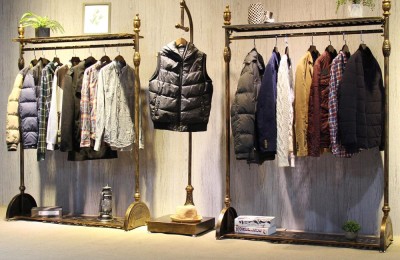Although our country is a country with a large population and abundant labor resources, every year, especially at the beginning of the year, factories of all sizes will struggle to recruit workers. The textile industry’s dependence on labor determines that its development will always be accompanied by recruitment.
At the beginning of every year, there will be an indispensable sight in the major textile towns in Jiangsu and Zhejiang regions, which are recruitment signs in the streets and alleys, and the talent markets are also crowded. Even so, it is still difficult to solve the problem of “labor shortage and difficulty in recruiting workers”. On the contrary, workers’ wages are gradually reaching the level of 10,000 yuan.
(Wujiang Wages of workers in the textile industry in the region in 2019)
The reason why it is difficult to recruit workers
1. Emerging jobs divert young workers
According to the owner of a weaving factory According to feedback, the current workers in the factory are all middle-aged people in their 40s and 50s, and there are no young people, especially those born in the 1990s. Existing workers must also be careful to “serve” for fear that one of them will resign if they are not satisfied, or even get sued for disputes. The director of a printing factory complained to us: “There is a huge turnover of employees in the summer, and it is difficult to recruit. Because it is very hot near the machines in the factory, and it is almost 40 degrees outside and 50 degrees in the workshop. Young people are not willing to suffer this hardship. , There should be five or six people per machine, but now two or three sometimes cannot be guaranteed. But after summer, when the weather cools down, it will be easier to recruit.” The hard-working people born in the 1960s and 1970s are about to retire, and young people are almost reluctant to enter factories, which is an important reason for the difficulty in recruiting workers.
“Poor working environment, long working hours, and few rest and vacations” is almost everyone’s common impression of textile factories. This impression gradually makes young people resist factories. Mechanical work and a two-point and one-line life circle are completely inconsistent with the character of today’s young people. No matter how high the salary is given to them, no matter how much encouragement and support is given, it will be in vain.
The emerging express delivery and takeout industries also give young people more choices. Meituan Waimai released its 2018 food delivery rider employment report. 77% of the more than 2.7 million riders are from rural areas, and most are born in the 1980s and 1990s. Are you hungry? The situation in “2018 Food Delivery Rider Group Insight Report” is similar. 77% of the more than 3 million registered riders are from rural areas, with an average age of 29 years old, and more than 20% are born after 1995. These used to be factory workers main group.
Life service jobs have a more relaxed working environment, free and flexible working hours, and high wages. “A lot of young people. This has also resulted in a gap in the age of factory workers and a tightening of sources of workers.
2. Production capacity relocated and workers returned
In the past few years, due to environmental protection improvements in Jiangsu and Zhejiang regions, a large number of water-sprayed fabrics Machines were stopped and eliminated, and some companies gradually moved to northern Jiangsu, Anhui, Hubei, Henan and other places. A considerable number of workers who have been engaged in textile industry in Jiangsu and Zhejiang come from the above-mentioned areas. Being able to work at home, although the salary will be lower, the cost of living has dropped, and being able to take care of the elderly and children at home has largely attracted some migrant workers in Jiangsu and Zhejiang areas to return.
According to our visits to weaving enterprises in Anhui, we learned that when they first came to Anhui, there were almost no weaving workers, let alone skilled workers. Therefore, we can only “poach” people from the Jiangsu and Zhejiang areas with high salaries. With food and accommodation included, the salary is nearly 10,000 yuan per month, which is much higher than that of workers in Jiangsu and Zhejiang areas. “Better pay in the central and western regions” has been heard in the Jiangsu and Zhejiang textile mill industries. Since they are all working in other places, why can’t they change to a place with better pay? A large number of workers quickly returned to the central and western regions. After a few years, many workers in Anhui have The vast majority of the weaving factories are workers from the Jiangsu and Zhejiang regions, and many of them are skilled workers, which also exacerbates the difficulty in recruiting workers in the Jiangsu and Zhejiang regions.
Any company that is not heartbroken and anxious about recruitment issues is not considered a qualified and responsible company. Today’s workers are completely different from those in the past. Workers in the past were more concerned about salary, while today’s workers are more concerned about rest and vacations. Especially during the Spring Festival, it doesn’t matter what your production plan is. It’s normal to buy a ticket to go home a month before. Promising to start work on the eighth day of the first lunar month is just an empty promise. If it doesn’t finish on the fifteenth day of the first lunar month, half of the workers in the factory will Not seen. Regardless of whether it’s the eighth or fifteenth day of the first lunar month, as long as I can come back, it’s still good. What I’m afraid of is that I won’t come back after the New Year. In order to retain workers, companies are also trying various methods, such as raising wages after the new year, giving out red envelopes, taking buses home for the New Year, etc./20190625134423960007.png”>
The disappearance of the demographic dividend, the flow of young people to the service industry and other reasons have caused workers to have “supply exceeds demand” in front of factories. ” situation has led to the continuous rise of workers’ wages. In the foreseeable future, this passive situation in factories will only become more serious. Fortunately, the advancement of science and technology has given the textile industry a solution to the situation, which seems to be “unbreakable and irreplaceable” “Positions are vulnerable in the face of machines and digitalization. Production costs have been reduced, efficiency has been greatly improved, and quality has been guaranteed. Then a large number of jobs are about to disappear. Coupled with the downturn in the textile market and the decline in overall production capacity, it is like adding insult to injury.
If China’s textile industry wants to maintain its advantage over Southeast Asia and other countries, it is inevitable to say goodbye to its reliance on a large amount of labor.At present, Japan In weaving factories in countries such as South Korea, it is normal for two or three people to manage two to three hundred looms. This is the future development goal of China’s textile industry. Maybe the textile factory you dismiss now will not have a chance to enter in the future.
</p







